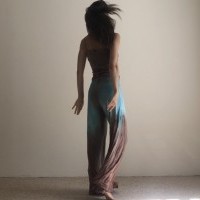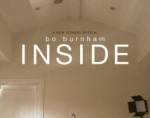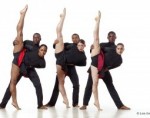
Sean Thomas Boyt On Performing the Hustle
by Kat J. Sullivan
Sean is a good friend—one of my first after moving to Philadelphia in 2014. Having both seen and danced in his work, I wanted to talk with him about his choices and the philosophies behind them. We spoke before his premiere of a work at SoLow Fest that contends with his experiences as a professional dancer in his anti-climactic style.
Kat Sullivan: I’ve seen Dance Like No One Likes You in a previous iteration, right?
Sean Boyt: No! All my work blends together. I’ve realized that I have one dance in me and there’s not much dance in that dance.
KS: Ha! Okay, how has your experience as a freelancer changed since you first got here?
SB: I think the name of the game is making connections and finding new opportunities, and I think I’ve done that a lot— a lot a lot. At this stage of my career, I feel I’ve done as much as I can . This is like my swan song; “This is what I’ve got! Take it or leave it!” At least, before I can start a new thing.
KS: This is the phoenix going up in flames!
SB: Yes. This is the flames.
KS: You feel like you’ve been making this piece for a while, at least thematically. Tell me what you mean by that.
SB: Choreographically, I’m less interested in the “moves”; my work goes toward improvisation and structured text, with some theatrical production mixed in. I have so much to say with my experience, to critique “dance life.”
KS: Many of your choices make me think of 1960s postmodern work—the “No Manifesto” of Yvonne Rainer, prizing qualities like “pedestrian.” But instead of approaching art as, “I am rejecting the preciousness of modern concert dance so I’m doing a ‘casual’ dance,’” you make work like, “I reject the preciousness of modern dance but I’m going to perform that preciousness.” This piece feels like the epitome of that.
SB: I’m on board with the “No Manifesto,” but I take issue with the “No to magic” line. On one hand, yes that’s true, “no to magic,” but on the other hand, the “magic” of production is a tool. In many contexts where I’ve performed this work, there’s been some production value—even when it was in a park. It’s where I get to play with the viewer’s perception of what’s happening and what their involvement is. Is it just a piece where they get to relax and watch, or do I add an interactive Q & A midway through? And, usually, an interaction needs to happen to address something live in the space. When I performed this in the park, there was someone who was supposed to be an audience member wandering around in the background of the dance and they had to be ushered into the performance space. Those things get folded into the piece.
KS: It’s interesting to see a caricature of the performers, or of the performance scene, or performing. There’s a fine line between irony and actually caring! I’m thinking about the part in the version I saw where you give out resumes; it’s clear that it’s a parody, yet there is the feeling that you might actually care. It’s multi-layered.
SB: If I wanted to expand this I would include the duet I made recently because it deals with the same things. It’s really a trio because I’m part of the performance in the beginning, and there are portions where I outright lie. I’ll introduce the piece by saying, “Thank you so much for coming. We are prepping for our season at the Joyce!” Kind of playing with the question, what is success? How do we establish ourselves in the dance world? Or the real world, without having clear markers? This part of the piece is interesting because either you know me and you think, “Sean would have told me if he got this really cool gig.” Or you don’t and it lands as, “Wow, that’s really impressive!” And then I get to milk it.
KS: That idea of lying makes me think of posting a highly edited clip of oneself improvising at The Iron Factory with a nebulous caption vaguely hinting at some future project. Just to make it seem, “Oh, they’re doing things!” And the reality is that they’ve been lying on the floor for two hours feeling awful. And who’s to say that isn’t how you move forward? Is that just the game? Is there a difference between that and just lying, “The Joyce is producing my work next year”?
SB: Right. Is that promotion or is that your work?
KS: Or just sadness?
SB: Well, yeah. Ultimately it’s the same end.
KS: When I read the description of the piece, where you say you’ve made this piece before, I also thought about the part, in the version I saw, where you’re in a dress and heels dancing to J-pop. Those are also elements you’ve used in other pieces; is that just an aesthetic choice or is it autobiographical?
SB: I think it’s both. In high school, I would watch videos of 24 Japanese girls dancing to a song and the audience adoring them. Granted, they’re produced to be consumed as entertainment, whereas a lot of the modern dance that I see or am involved with is not as “palatable.” Maybe four other people go to see the modern dance shows and thousands of people are watching these pop performances. Right now, I’m playing with being that pop star. There are elements that I don’t think are mainstream, or even fringe-y; they’re just other. But I also just like wearing a nice dress and shoes! I’m not interested in it as gender expression. It’s a character.
KS: Right. I don’t think that you’re trying to make a statement about drag culture.
SB: No! That’s another interview.
KS: J-pop is a stylized, commercialized performance art that is not meant to be interpreted beyond surface value. There’s that feeling of being super-produced but not being super-precious.
SB: Which is just like an Instagram video of someone dancing around.
KS: Exactly. With all these elements that you’re working with, do you think this piece says that more clearly than your other work?
SB: I think I’m allowing people to draw their own conclusions—I’m more interested in showing it as a jumping-off point for conversation. What’s important to see, as dance? What’s not important?
KS: And can’t we admit that this is all kind of ridiculous?
SB: Philly Fun Guide just posted a list of dances to see. There are some big names on it, but I was actually listed. It’s great to be represented there and we’ll see if people come due to that. But it’s not of the same caliber as any of the other shows listed, although it’s presented so that people will feel validated that they saw a real dance show. Will it have the same effect on you as a more polished work by a veteran ensemble of dancers would? Who’s to say?
Dance Like No One Likes You, Sean Thomas Boyt, Performance Garage. June 17, 7pm.
By Kat J. Sullivan
June 22, 2018










